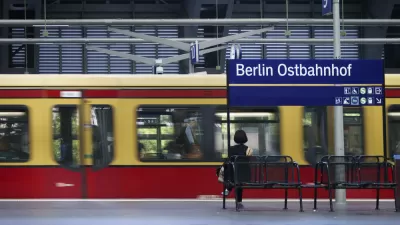Is there a difference between the two most common fare structures in public transit?
Jonna McKone of TheCityFix asks: "What are the options with payment schemes for public transportation?
There are two tiers of strategies that a Los Angeles Metro study recently outlined:
Time-based systems allow passengers to ride a transit system and make free transfers for a set amount of time. This scheme can be anything from an unlimited weekly pass to an unlimited monthly pass, to even shorter periods of time, such as a free transfer within a one- to two-hour time period. This pricing system requires some sort of card (paper, magnetic or smart card) to issue the transfer.
Distance-based systems charge higher fares for rides that cover greater distances. The fares could either be on a route-by-route basis, as we have in Washington, D.C., where the price between two points varies (here's a nice run-down of the District's pricing options), or a set of fare zones that could establish incremental fares based on certain regions of the city. For example, Paris has concentric circles that ring the city and form zone boundaries. Travel to the outer zones is more expensive than inner areas. Los Angeles' Metrolink is much different-the system offers a daily pass for $6 and a preboard flat fare. The thought behind the distance-based scheme is that riders who use more service should pay for the service.
There are drawbacks to both systems. Distance-based fares often end up being more complicated to develop and enforce, as they require a card to be re- swiped, tapped or punched for bus or rail, or they require a barrier that reinforces additional payment."
Thanks to Garrett Bradford
FULL STORY: Time-Based Versus Distance-Based Fares

Alabama: Trump Terminates Settlements for Black Communities Harmed By Raw Sewage
Trump deemed the landmark civil rights agreement “illegal DEI and environmental justice policy.”

Study: Maui’s Plan to Convert Vacation Rentals to Long-Term Housing Could Cause Nearly $1 Billion Economic Loss
The plan would reduce visitor accommodation by 25% resulting in 1,900 jobs lost.

Planetizen Federal Action Tracker
A weekly monitor of how Trump’s orders and actions are impacting planners and planning in America.

Wind Energy on the Rise Despite Federal Policy Reversal
The Trump administration is revoking federal support for renewable energy, but demand for new projects continues unabated.

Passengers Flock to Caltrain After Electrification
The new electric trains are running faster and more reliably, leading to strong ridership growth on the Bay Area rail system.

Texas Churches Rally Behind ‘Yes in God’s Back Yard’ Legislation
Religious leaders want the state to reduce zoning regulations to streamline leasing church-owned land to housing developers.
Urban Design for Planners 1: Software Tools
This six-course series explores essential urban design concepts using open source software and equips planners with the tools they need to participate fully in the urban design process.
Planning for Universal Design
Learn the tools for implementing Universal Design in planning regulations.
Caltrans
Smith Gee Studio
Institute for Housing and Urban Development Studies (IHS)
City of Grandview
Harvard GSD Executive Education
Toledo-Lucas County Plan Commissions
Salt Lake City
NYU Wagner Graduate School of Public Service





























